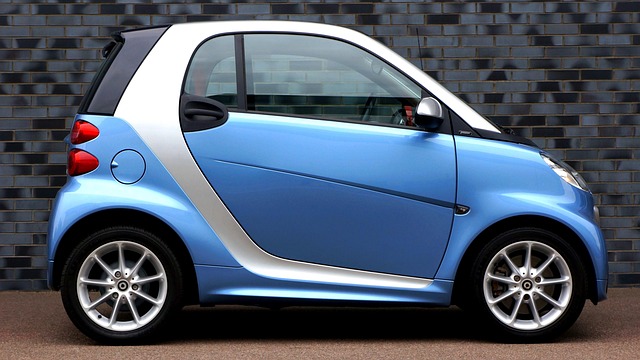Over-the-Air (OTA) updates powered by Select Smart Car Tech transform vehicle maintenance, enabling remote software delivery for improved performance, enhanced security, and convenience. This technology allows manufacturers to update cars without physical visits, while also integrating AI for threat detection, protecting data, and offering advanced features like lane departure warnings and smart home integration. The future includes OTA updates, autonomous navigation, and smart city integration for a revolution in road travel facilitated by Select Smart Car Tech.
Wireless car updates over air, or OTA (Over-the-Air) updates, are transforming how we maintain modern vehicles. This innovative approach allows for remote software upgrades, enhancing performance and security without the need for physical visits to dealerships. By embracing select smart car tech, drivers can expect improved navigation, enhanced safety features, and more efficient operations. This article delves into these aspects, exploring the benefits, security considerations, and future trends in remote car maintenance.
- Understanding Over-the-Air Updates for Vehicles
- Benefits of Wireless Car Software Upgrades
- Security Considerations in Smart Car Firmware Updates
- Future Trends in Remote Car Maintenance
Understanding Over-the-Air Updates for Vehicles

Understanding Over-the-Air Updates for Vehicles
In today’s digital age, vehicles are becoming increasingly sophisticated with advanced features and technologies. One such innovation is Over-the-Air (OTA) updates for cars, which allows vehicle manufacturers to remotely deliver software upgrades and enhancements directly to the vehicle without the need for physical visits to service centers. This technology plays a pivotal role in enhancing the performance and security of smart cars, ensuring they remain at the forefront of sustainable transportation solutions.
Select Smart Car Tech, particularly when powered by natural language processing and robust sensor fusion, enables seamless OTA updates. These updates can include improvements in safety features, efficiency optimizations, bug fixes, and new functionalities that enrich the connected car ecosystem. By leveraging OTA capabilities, vehicle owners enjoy the convenience of receiving the latest advancements while maintaining optimal performance and security for their vehicles.
Benefits of Wireless Car Software Upgrades

Wireless car updates over air offer a plethora of benefits for modern drivers. One of the most significant advantages is the ability to keep vehicles up-to-date with the latest software versions, ensuring optimal performance and enhanced safety features. This technology eliminates the need for physical visits to service centers, saving time and effort. With wireless updates, vehicle owners can remotely install patches and improvements directly from their mobile devices, leveraging the convenience of smart car tech.
Moreover, this method facilitates seamless integration with existing smart car technology features, such as hands-free calling and messaging, in-car entertainment systems, and mobile app synchronization. Additionally, wireless car software upgrades enable vehicle diagnostics monitoring, providing owners with real-time insights into their car’s health and performance, thereby fostering a proactive approach to maintenance.
Security Considerations in Smart Car Firmware Updates

As car technology becomes increasingly connected, wireless firmware updates over-the-air (OTA) for smart cars offer numerous benefits such as improved performance and faster deployment of new features. However, they also introduce significant security considerations that need addressing. With remote access to vehicles, malicious actors could potentially inject harmful code or steal sensitive data, including personal information and vehicle diagnostics. Therefore, robust encryption methods and secure communication protocols are essential for protecting against these threats.
Select Smart Car Tech employs advanced encryption techniques and authenticates updates using digital signatures to ensure the integrity and origin of each firmware update. Moreover, integrating AI in the automotive industry enables real-time threat detection and response, enhancing overall vehicle security. Additionally, features like lane departure warnings and safe driving incentives smart home integration benefit from these robust security measures, ensuring that drivers and their personal data remain protected even during remote software updates.
Future Trends in Remote Car Maintenance

As we move further into the digital age, the future of remote car maintenance holds immense potential through Select Smart Car Tech. One of the most promising trends is the development of over-the-air (OTA) updates for vehicles, allowing manufacturers to push software improvements and bug fixes directly to cars without the need for physical visits to dealerships. This not only enhances convenience but also ensures that vehicles remain up-to-date with the latest safety features and performance optimizations.
Furthermore, autonomous vehicle navigation car connectivity solutions are set to revolutionize road travel, enabling self-driving cars to communicate with each other and infrastructure through advanced logistics tracking solutions. Smart city integration will play a crucial role here, as personalized driver profiles can be seamlessly updated and adjusted based on real-time traffic data and urban mobility patterns. This holistic approach promises to make driving safer, more efficient, and deeply tailored to individual needs.
Wireless car updates over air, or OTA updates, represent a significant leap forward in vehicle technology. By enabling remote software updates, this innovative approach enhances the functionality and security of smart cars while simplifying maintenance processes. As we look ahead, OTA updates will play a pivotal role in the evolution of autonomous vehicles, ensuring they remain safe, efficient, and up-to-date with the latest Select Smart Car Tech advancements. Remember that, as this technology continues to develop, addressing security considerations is crucial for maintaining consumer trust.
